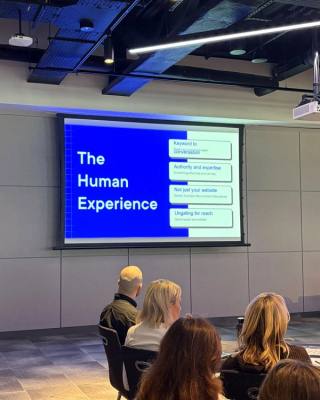Everyone wants a beautiful website, but the most effective designs are motivated by clear goals, and driven by well-defined data. By harnessing the correct information during the design phase, your website can connect with the most important users, and provide them with the tools they need to convert.
This blog explores how data fuels smart design choices, from user interface adjustments to personalised experiences that drive conversion.
Goal-oriented user interface design
A successful digital experience starts with knowing what you want to achieve. Whether the goal is signups, downloads, purchases or leads, each design decision should support that outcome. Data-driven design means making every design element reflect that underlying goal.
This applies to the entire design of a digital experience, but also to each individual component. Clear calls to action, frictionless navigation, responsive layouts, and consistent visual hierarchies can all be designed more effectively when informed by data from previous iterations or related campaigns.
Collecting data: what can you use?
There’s no shortage of tools for capturing insight. The challenge is knowing which metrics matter and how to translate them into action. At Kooba, we prioritise data sources that illuminate behaviour and help us refine the journey. This information can come from absolutely anywhere, so we recommend being open minded in what you look for.
Here are some examples of the types of data that inform our work:
- Website analytics (Google Analytics, Hotjar, Adobe Analytics)
- Heatmaps and session recordings
- Conversion rates and funnel drop-off points
- A/B and multivariate testing results
- CRM and campaign performance data
- Stakeholder knowledge of target audiences (and existing audiences)
- User feedback from surveys or usability tests
Quantitative vs qualitative
The term “data” might suggest a purely numerical approach, but this isn’t the case. Hard statistics are always valuable, but in-house knowledge and experience can be incredibly important too. Nobody knows your users better than you do, and stakeholder discussions are crucial to the design process for this reason.
Likewise, qualitative expertise is needed to place quantitative findings into their proper context. For instance: Is high engagement a sign that users are enjoying the site, or instead that they are struggling to navigate? The numbers will look the same in both scenarios, but greater context of the audience, their needs, and their unique journeys will reveal a more accurate answer.
To each their own: segmentation and personalisation
Not all users behave the same, and your website shouldn’t treat them that way. Segmentation allows us to identify distinct audience groups based on behaviour, geography, device, or source channel. Personalisation then takes it further, adapting the content, structure or call to action for each segment.
A returning customer should not see the same experience as a first-time visitor. A B2B buyer deserves different messaging than a student researcher. By leveraging data from marketing platforms, analytics tools, and CRM systems, we can design user journeys that feel intuitive and relevant from the first click.
Better data, better design, better results
When you let data guide your design process, you don’t just build nicer pages, but also a better-performing platform. Every change becomes a measurable improvement that helps to drive leads and conversions.
At Kooba, we bring together creative design and marketing intelligence to deliver digital experiences that convert. Get in touch today to see how data can drive your next redesign.








